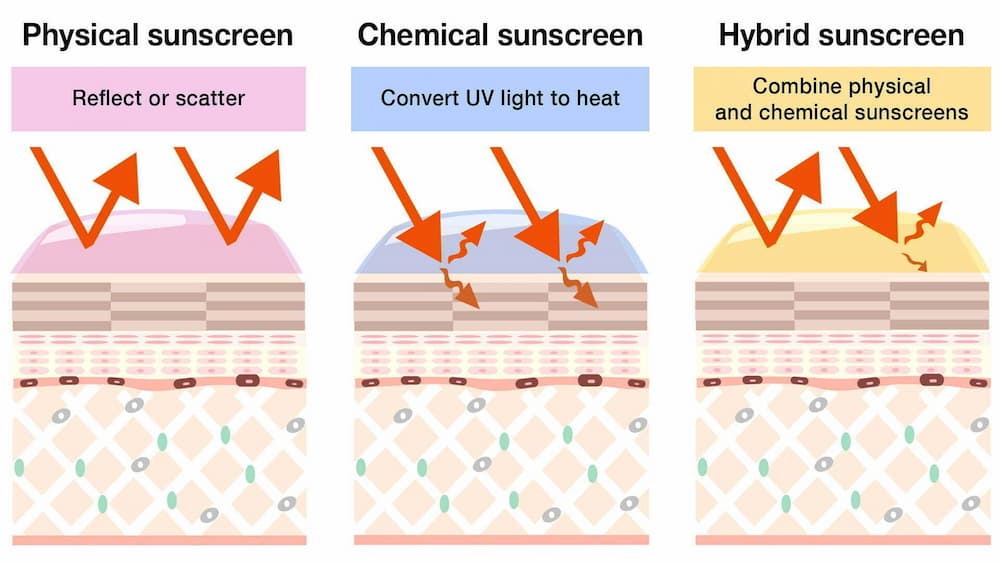Find the differences among physical, chemical, and hybrid sunscreen at once!
Sunscreen products are mainly divided into physical, chemical, and hybrid. What is the difference? How to choose suitable sunscreen for different skin types and conditions?
Physical vs. Chemical vs. Hybrid sunscreen
Physical Sunscreen: like a mirror to reflect sunlight
The tiny particles on the skin’s surface physically prevent UV rays from penetrating the skin by reflection or scattering. The most commonly used ingredients on the market are titanium dioxide (TiO2) and zinc oxide (ZnO).
Chemical sunscreen: like endothermic melting ice
The chemicals create a chemical reaction in which UV light is converted to heat and dissipates from the skin. Chemical sunscreen ingredients include salicylate, cinnamate, and so on.
Hybrid sunscreen: combined Physical & Chemical sunscreen advantage
Physical sunscreen and chemical sunscreen have their own advantages and disadvantages. Many sunscreen products combine them to give customers a safer and fresher experience, called hybrid sunscreen.
Source: UNICARE
How to choose the right sunscreen?
In comparison, physical sunscreens have higher stability, less risk of penetrating the skin, and less irritation, making them suitable for sensitive skin. The chemical sunscreen has a non-greasy texture and a more robust defense against UV rays, which make it ideal for oily skin and acne skin. Otherwise, hybrid sunscreen combines the above two advantages, and its product types are more diverse. You can choose suitable products to meet your needs.
Source: UNICARE
Regarding formulas, there is no right or wrong, as each element plays a vital role in protecting our skin from UV rays. The most important thing is to choose sunscreen according to your skin type and condition and reapply it frequently and regularly. Remember that “the best” sunscreen is the one you’ll use consistently.





